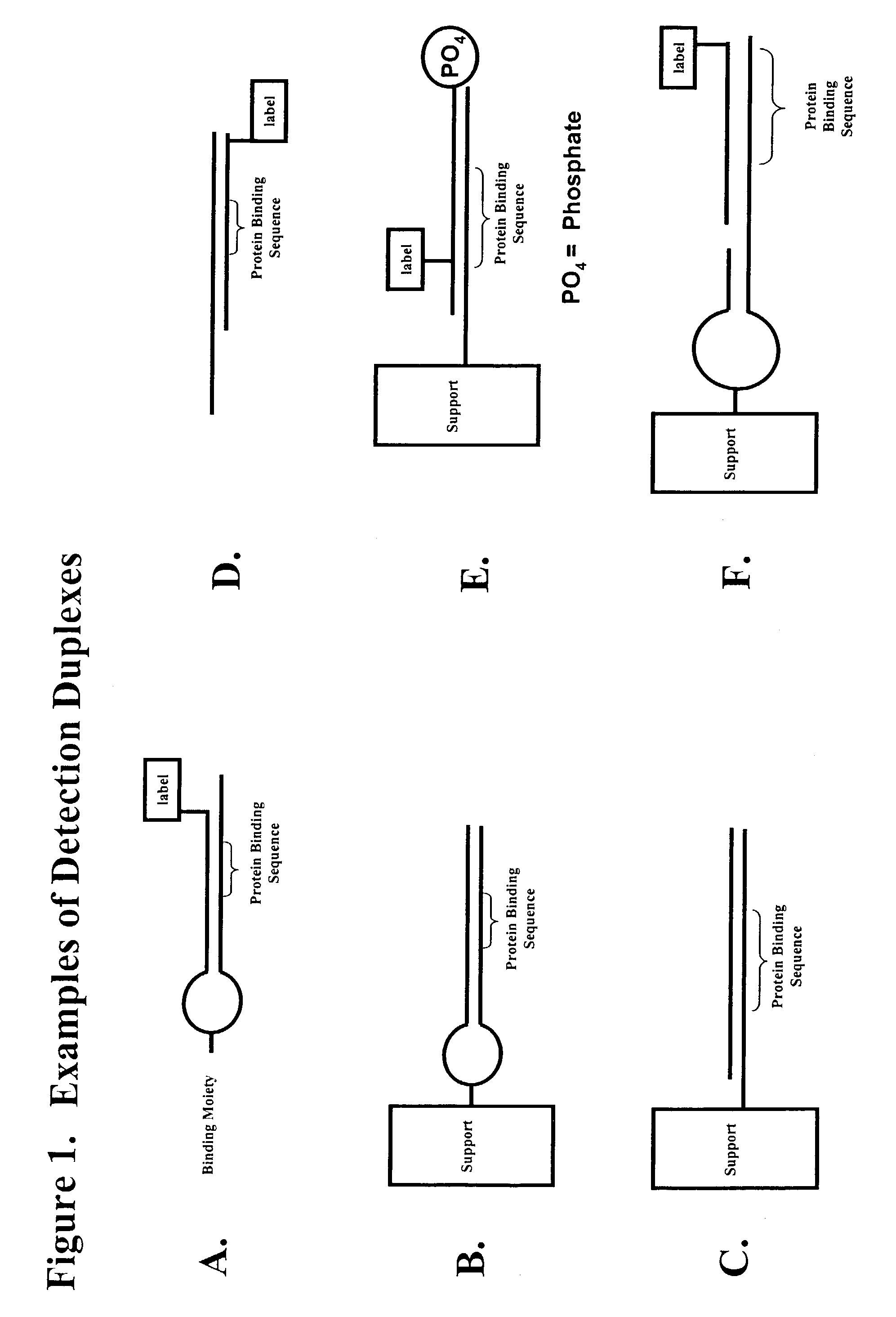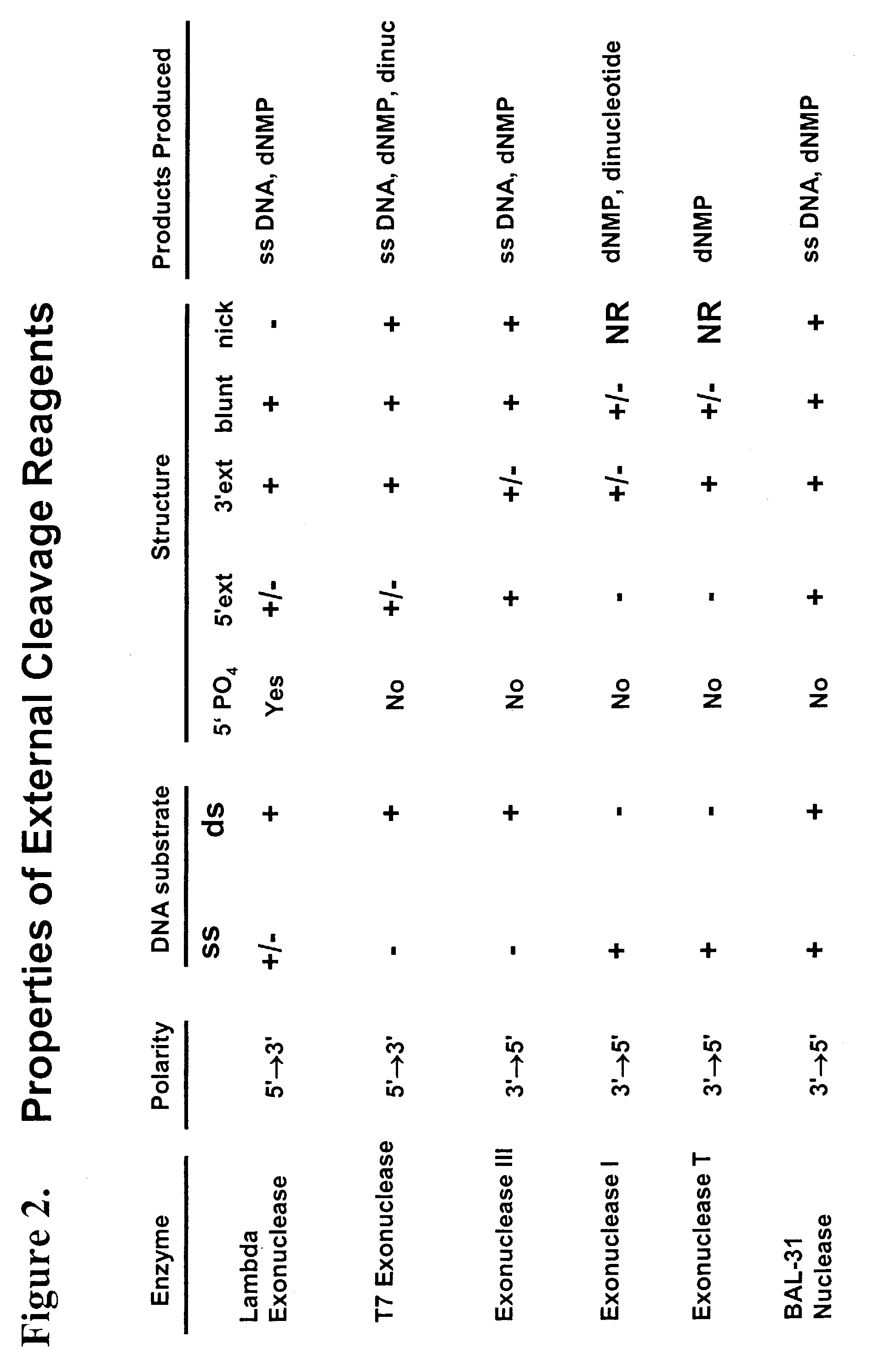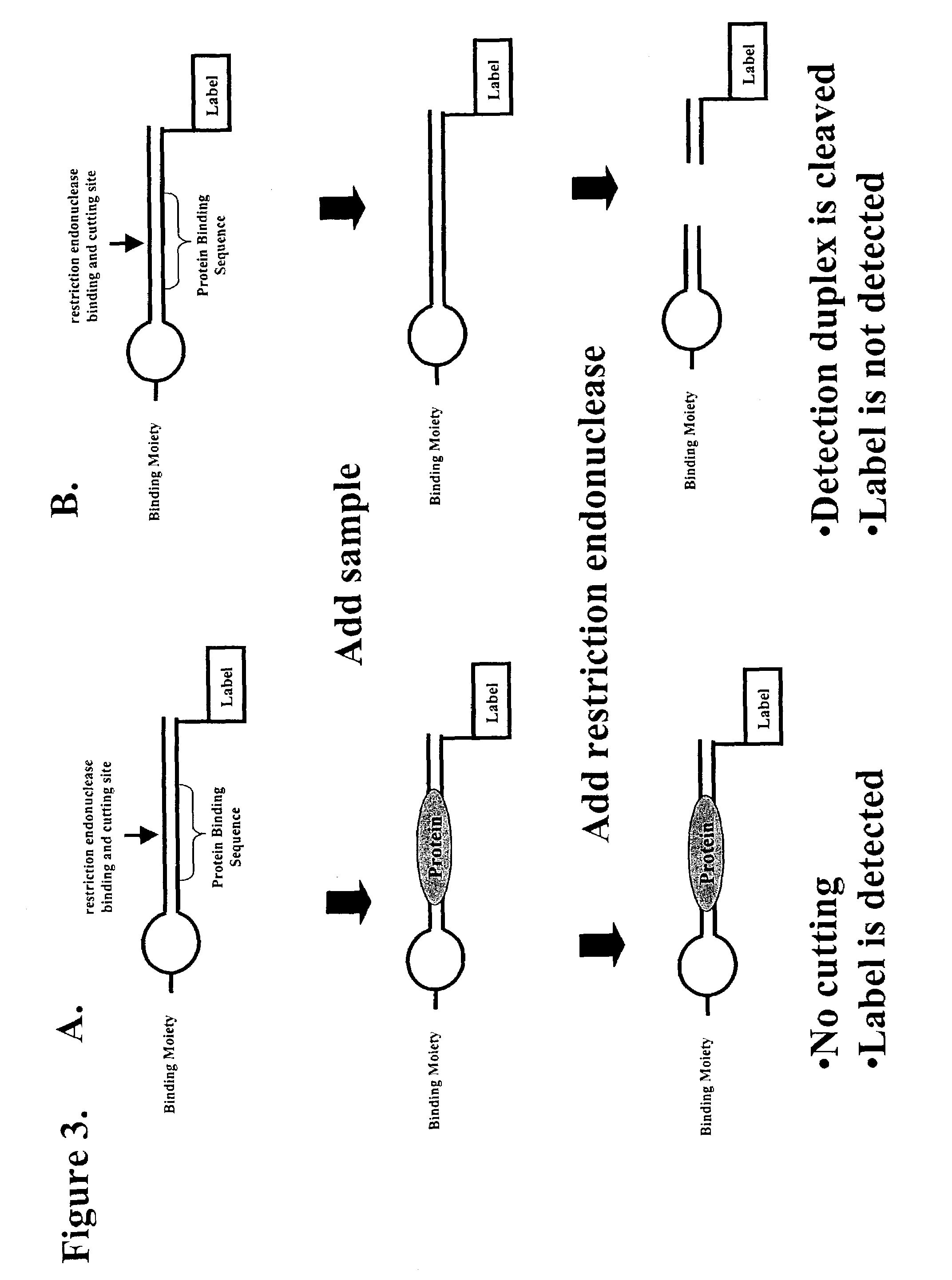Multiplex method of detecting sequence-specific DNA binding proteins using detection duplexes comprising unmodified nucleic acid sequences as capture tags
a technology of dna binding proteins and nucleic acid sequences, applied in the field of nucleic acid constructs, can solve the problems of increasing or decreasing the transcription rate of genes, imposing an enormous cost on society and the pharmaceutical industry, and unable to meet the specificity of therapies
- Summary
- Abstract
- Description
- Claims
- Application Information
AI Technical Summary
Benefits of technology
Problems solved by technology
Method used
Image
Examples
example 1
Bead Coupling.
[0082]Oligonucleotides were coupled to beads using standard EDC carboxylate coupling chemistry. Briefly, beads are suspended in MES buffer pH 4.7 and oligonucleotides are added to a final concentration of 2 uM. Fresh EDC is added to provide a final concentration of 1–2 mg / ml and is reacted with the bead suspension for 30 minutes while rotating in the dark. A similar concentration of fresh EDC is again added to the bead suspension and reacted for and additional 2 hours while rotating in the dark. Coupled beads are washed once with 50 mM Tris pH 7.5, 100 mM NaCl, 0.05% tween-20, once with 0.2% SDS in PBS, twice with PBS pH 7.5 containing 0.02% Tween-20, once with PBS pH 7.5 and resuspended in PBS pH 7.5 to a final concentration of 1000–2000 beads / microliter.
example 2
Detection of Protein Binding to Detection Duplexes with Detection Reagents Using a Capture Tag.
Oligonucleotide Annealing:
[0083]Detection duplexes were assembled from the oligonucleotide PO4Kbfor
[0084](P04-AGTTGAGGGGATCCCCAGGAGCGGCTTATCGGTCTATTC-AACTCCCCTAGGGG) (SEQ ID NO: 1) that carries a tag sequence, NF-kB binding site and 5 prime phosphate group, and the complement oligonucleotide KBrev (TCCTGGGGATCCCCTCAACT) (SEQ ID NO: 2) devoid of tag sequence.
[0085]P04 Kbfor and KBrev were annealed by first diluting 100 uM oligonucleotide stocks into annealing buffer (40 mM Tris pH 7.5, 100 mM NaCl, and 1 mM EDTA), to give a ratio of 20 nM P04 Kbfor: 1 uM KBrev. 100 ul of the oligonucleotide mix was then heated to 95° C. for 1 minute, and cooled linearly to room temperature over a period of 45 minutes. 1 ul of the annealed mixture containing detection duplexes displaying a single stranded tag sequence was added to 19 ul of transcription factor binding buffer (10 mM tris pH 7.5, 50 mM NaCl, 2...
example 3
Detection of Protein Binding to DNA with a Capture Reagent
[0086]Two micrograms of capture reagent (Santa Cruz Biotechnologies NFKb P65 antibody Cat#SC-372) is incubated with bead supports that are covalent coupled to recombinant Protein G (Upstate Biotechnology). This incubation is carried out while shaking for 2 hours at room temperature in the absence of light. Beads are then washed with 3×200ul volumes of transcription factor buffer to remove antibodies not bound the protein G bead surface. 200 fmoles of biotin-HPNFKB65 hairpin detection duplex
[0087]
biotin-TATCCAAGGGGACTTTCCCCTG G 3′ ATAGGTTCCCCTGAAAGGGGAC(SEQ ID NO: 3)
[0088]is incubated with 2ug of nuclear extracts obtained from control and TNF alpha stimulated HeLa cells for 10 minutes at room temperature in 20 ul of transcription factor binding buffer (10 mM tris pH 7.5, 50 mM NaCl, 2 mM KCl, 2 mM MgCl2) containing lug poly dI-dC, and 0.5% bovine serum albumin (fraction V). Following the incubation...
PUM
 Login to View More
Login to View More Abstract
Description
Claims
Application Information
 Login to View More
Login to View More - R&D
- Intellectual Property
- Life Sciences
- Materials
- Tech Scout
- Unparalleled Data Quality
- Higher Quality Content
- 60% Fewer Hallucinations
Browse by: Latest US Patents, China's latest patents, Technical Efficacy Thesaurus, Application Domain, Technology Topic, Popular Technical Reports.
© 2025 PatSnap. All rights reserved.Legal|Privacy policy|Modern Slavery Act Transparency Statement|Sitemap|About US| Contact US: help@patsnap.com



